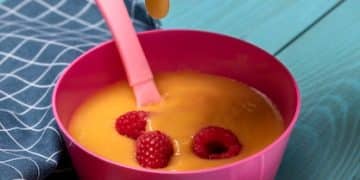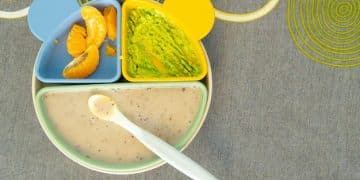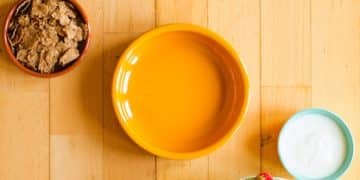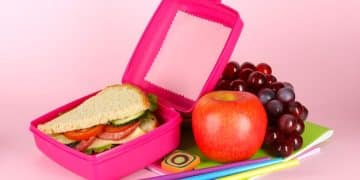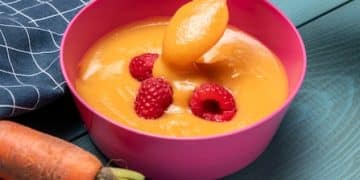Freezing Baby Food: A Comprehensive Guide to Safe Storage and Thawing
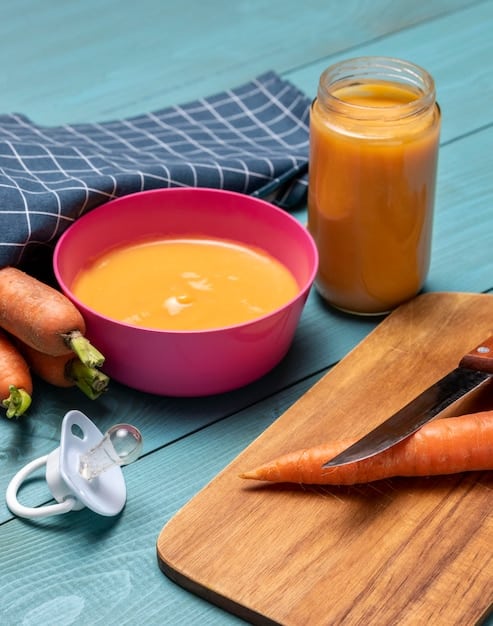
Freezing baby food is a practical way to preserve nutrients and save time, offering a convenient solution for busy parents looking to provide homemade meals for their little ones.
Discover the best practices for freezing baby food, ensuring safe storage and thawing methods to maintain its nutritional value and appeal to your little one.
Why Freeze Baby Food?
Freezing baby food offers numerous advantages for parents. It’s a convenient method to preserve fresh, homemade meals and ensure your baby always has access to nutritious food.
Let’s explore the key benefits of freezing baby food, from saving time to reducing waste.
Time-Saving Convenience
One of the primary benefits of freezing baby food is the time it saves. Instead of preparing small batches daily, you can cook larger quantities once and freeze them in individual portions.
Preserving Nutrients
Freezing helps retain the vitamins and minerals in fruits and vegetables. This is especially important when fresh produce isn’t readily available or when you want to ensure your baby gets the best possible nutrition.
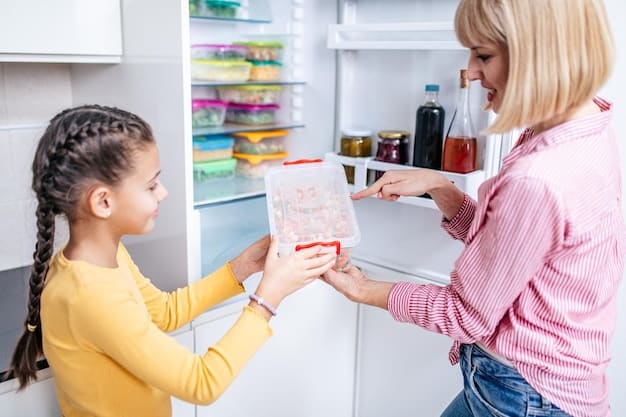
- Reduces food waste by preserving excess portions.
- Ensures a constant supply of homemade baby food.
- Allows for variety in your baby’s diet without daily cooking.
Freezing baby food is a practical solution for busy parents. By dedicating a small amount of time to batch cooking, you can ensure that your baby always has access to healthy, homemade meals. This method not only saves time but also reduces the stress of meal preparation.
Best Containers for Freezing Baby Food
Choosing the right containers is crucial for successful baby food freezing. The ideal container should be safe, easy to use, and capable of preserving the quality of the food.
From ice cube trays to reusable pouches, explore the best options for freezing baby food.
Ice Cube Trays
Ice cube trays are perfect for portioning baby food into small, manageable servings. Once frozen, the cubes can be easily transferred to freezer bags for longer storage.
Reusable Pouches
Reusable baby food pouches are another great option, especially for on-the-go feeding. They are easy to fill, store, and clean, making them a convenient choice for busy parents.
- Silicone molds provide easy release of frozen portions.
- Glass containers are durable and non-toxic but may break if not handled carefully.
- Plastic containers should be BPA-free to ensure safety.
The best container for freezing baby food depends on your specific needs and preferences. Ice cube trays are ideal for small portions, while reusable pouches are great for portability. Always ensure that your chosen containers are safe and suitable for freezing.
Step-by-Step Guide to Freezing Baby Food
Freezing baby food is a straightforward process once you understand the basic steps. Proper preparation and storage are essential to maintain the food’s quality and safety.
Let’s walk through a detailed guide to freezing baby food effectively.
Prepare the Food
Start by cooking and pureeing the food according to your baby’s age and dietary needs. Ensure the puree is smooth and free of any lumps.
Portion the Food
Divide the puree into small, individual portions using ice cube trays, silicone molds, or reusable pouches.
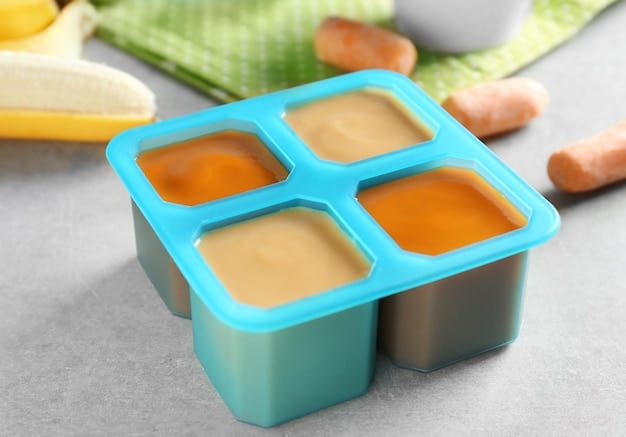
- Cool the food completely before freezing to prevent condensation.
- Label each container with the date and contents for easy identification.
- Store the food in the freezer as quickly as possible to minimize bacterial growth.
Freezing baby food involves preparing, portioning, and storing the food properly. By following these steps, you can ensure that your baby’s meals are safe, nutritious, and readily available whenever you need them. Consistency and attention to detail are key to successful freezing.
Safe Thawing Methods for Baby Food
Thawing baby food safely is just as important as freezing it. Improper thawing can create an environment for bacterial growth, which can be harmful to your baby.
Explore the safest and most effective methods for thawing frozen baby food.
Refrigerator Thawing
The safest way to thaw baby food is in the refrigerator. Simply transfer the frozen portion to the fridge and allow it to thaw overnight.
Microwave Thawing
If you need to thaw baby food more quickly, you can use a microwave. However, ensure that you stir the food frequently to avoid hot spots.
- Never thaw baby food at room temperature.
- Use thawed baby food within 24 hours.
- Discard any uneaten portion of thawed baby food.
Choosing the right thawing method is essential for your baby’s safety. Thawing in the refrigerator is the safest option, while microwave thawing should be done with caution to avoid uneven heating. Always follow safe handling guidelines to protect your baby from potential harm.
Foods That Freeze Well and Those to Avoid
Not all foods freeze equally well. Some foods retain their texture and flavor better than others, while some may become watery or change in consistency.
Learn which foods are ideal for freezing and which ones should be avoided when preparing baby food.
Foods That Freeze Well
Fruits like apples, bananas, and berries, as well as vegetables like carrots, sweet potatoes, and peas, freeze exceptionally well. These foods maintain their texture and nutritional value after thawing.
Foods to Avoid
Some foods, such as watery vegetables like cucumber and lettuce, or dairy-based foods like yogurt and custard, do not freeze well. These foods may become watery or separate upon thawing.
- Cooked meats and poultry can be frozen but may have a slightly altered texture.
- Avocados can be frozen but should be mixed with lemon juice to prevent browning.
- Herbs and spices can be added to baby food before freezing to enhance flavor.
Selecting the right foods for freezing is crucial to ensure that your baby’s meals are both nutritious and palatable. Focusing on foods that retain their quality after thawing and avoiding those that don’t will help you provide the best possible nutrition for your little one.
Tips for Maintaining Quality and Safety
Maintaining the quality and safety of frozen baby food requires careful attention to detail. From preparation to storage and thawing, every step plays a crucial role.
Explore practical tips to ensure your frozen baby food remains safe, nutritious, and appealing to your baby.
Proper Storage
Store frozen baby food in airtight containers or freezer bags to prevent freezer burn and maintain freshness. Ensure the freezer is set to the correct temperature.
Hygiene Practices
Always wash your hands thoroughly before preparing baby food. Clean all utensils and surfaces to minimize the risk of contamination.
- Use frozen baby food within 1-2 months for optimal quality.
- Taste the thawed food before serving to ensure it still smells and tastes fresh.
- Consult your pediatrician for specific dietary recommendations and advice.
Adhering to strict hygiene standards, using appropriate storage methods, and following recommended guidelines are essential for maintaining the quality and safety of frozen baby food. These practices will help ensure that your baby receives nutritious meals without any health risks.
| Key Point | Brief Description |
|---|---|
| ⏱️ Time-Saving | Freeze in batches to reduce daily cooking time. |
| 🧊 Safe Thawing | Thaw in the refrigerator or microwave with care. |
| 🍎 Good Foods | Fruits and vegetables like apples and carrots freeze well. |
| ✅ Best Practices | Store properly, maintain hygiene, and use within 1-2 months. |
Frequently Asked Questions
▼
You can typically store baby food in the freezer for 1-2 months to maintain its quality and nutritional value. Always label the containers with the date to keep track of how long they’ve been stored.
▼
No, it is not safe to refreeze baby food after it has been thawed. Refreezing can increase the risk of bacterial growth. Discard any uneaten thawed portion to ensure your baby’s safety.
▼
The safest way to thaw frozen baby food is in the refrigerator overnight. If you need it faster, you can use a microwave, but stir frequently to avoid hot spots. Ensure it’s cooled before serving.
▼
Yes, you can freeze store-bought baby food, especially if you won’t use the entire jar or container within the recommended timeframe. Transfer the desired portion to a freezer-safe container.
▼
Check for changes in color, texture, or smell. If the baby food has an off odor, appears discolored, or has a strange texture, it’s best to discard it to prevent any potential health risks for your baby.
Conclusion
Freezing baby food is an excellent way to provide nutritious and convenient meals for your baby. By following these guidelines, you can ensure that your homemade or store-bought baby food remains safe, fresh, and delicious, making mealtime easier and healthier for both you and your little one.

